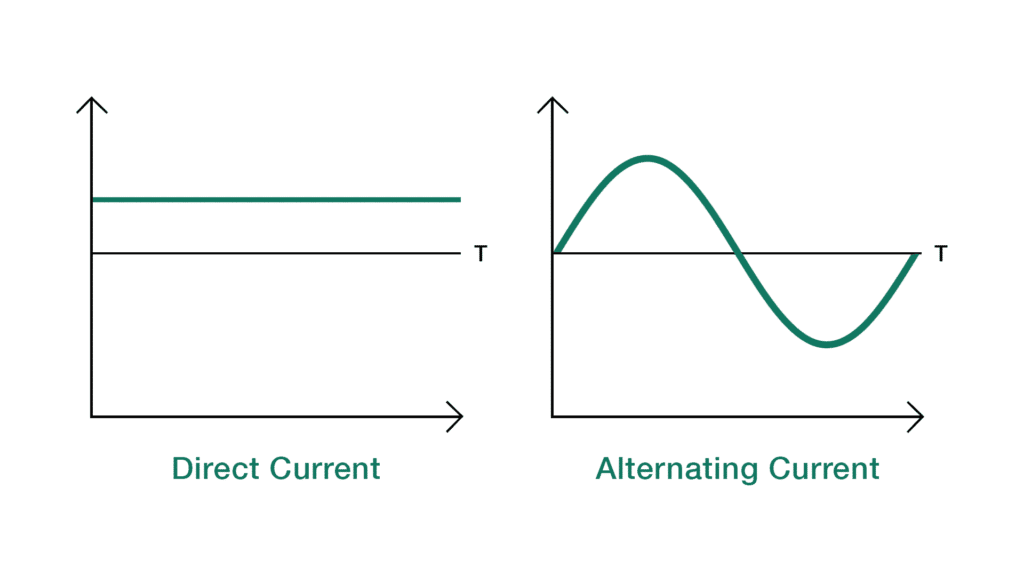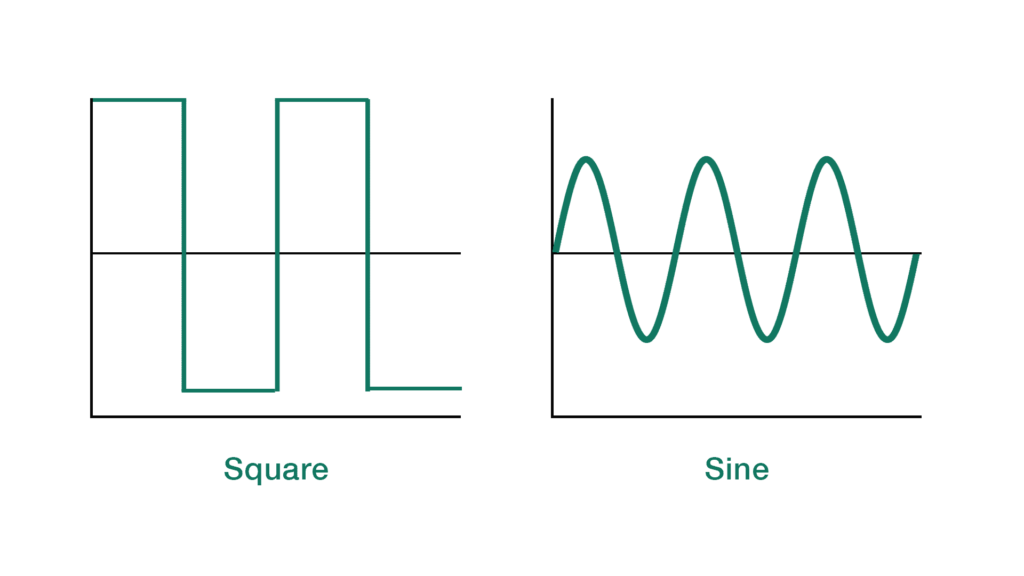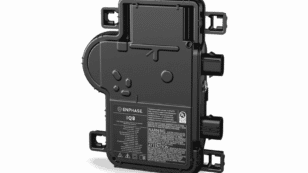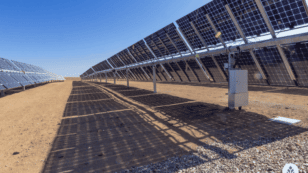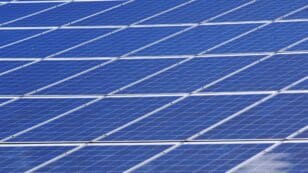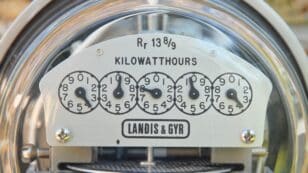
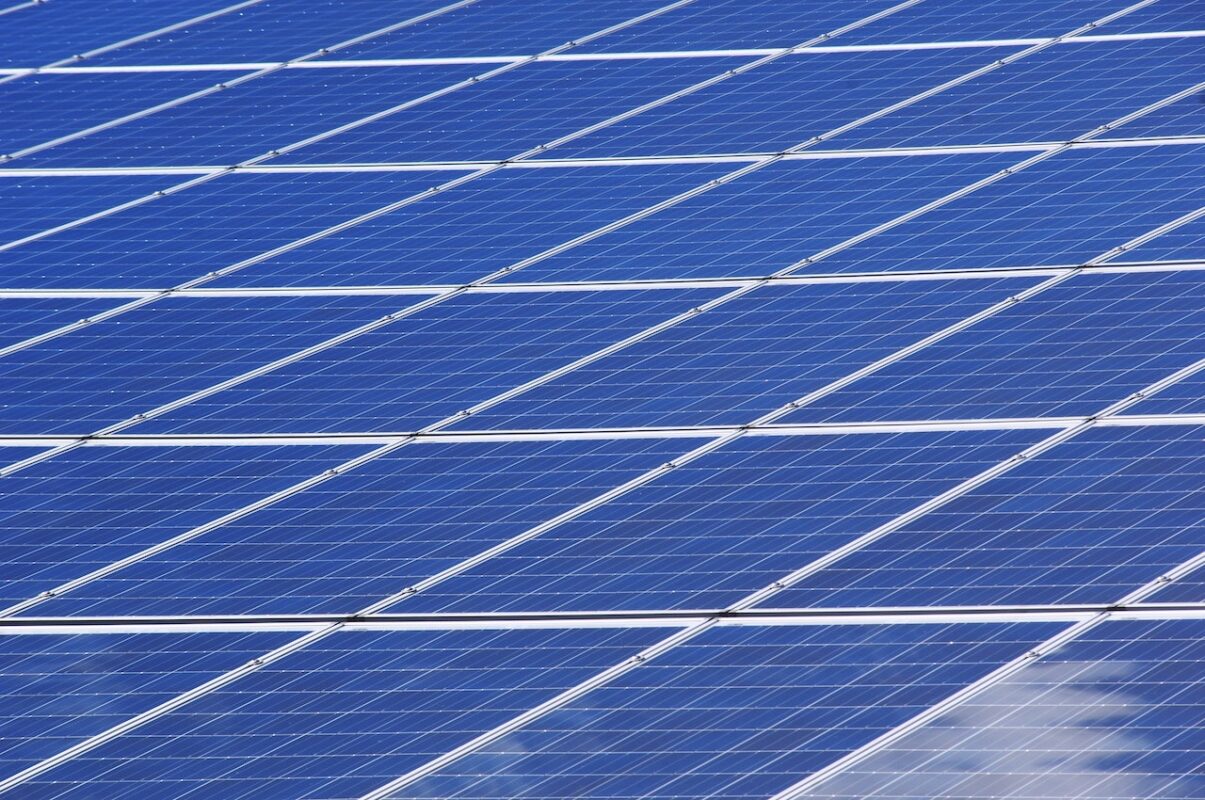
Guide to Solar Panel Inverters: Why They Matter (2024)
Here’s what this article will cover:
- How inverters work
- Types of inverters
- Choosing the right inverter for your needs
- Typical inverter pricing
Each product and or company featured here has been independently selected by the writer. You can learn more about our review methodology here. If you make a purchase using the links included, we may earn commission.
What Are Solar Inverters?
When the first power transmission lines were installed, they used what is called direct current (DC). As the name suggests, with direct current electrons travel continuously forward through a conductor. In the late-19th century, the inventor Nikola Tesla created alternating current (AC). With AC current, the electrons move back and forth through a conductor instead of traveling only forward.
With the advent of AC electricity, long-distance power transmission was suddenly transformed. Alternating current was safer and more efficient, allowing us to transmit it at high voltages. As a result, all the power grids in the coming years were designed to carry AC current. Similarly, all appliances were designed to have AC input.
Fast forward to the invention and use of solar panels. Solar panels are essentially DC devices, meaning the power flowing out of any panel is always DC. This means we won’t be able to connect a panel to an electrical appliance which is designed to have AC input. Since nearly all appliances today work on alternating current, a device that converts DC solar energy to usable AC energy is needed.
Enter solar inverters. Inverters collect DC electricity from a solar array or a battery and convert it into usable AC output. They come in various shapes and sizes and are usually rated for the system size they’re used with.

SunPower
Pros
- Most efficient panels on the market
- National coverage
- Cradle to Cradle sustainability certification
- Great warranty coverage
Cons
- Expensive
- Customer service varies by local dealer
SunPower designs and installs industry-leading residential solar and storage solutions across all 50 states. With a storied history of innovation dating back to 1985, no other company on this list can match SunPower’s experience and expertise.
SunPower earns its position as the top national installer on our list for a handful of reasons: It installs the most efficient solar technology on the residential market, offers the most expansive service area and backs its installations with a warranty well above the industry standard. All the while, SunPower pioneers sustainability efforts within the industry.
If that weren’t enough, SunPower systems come packaged with products all manufactured in-house by its sister company, Maxeon. This means that your panels, solar cells, inverters, battery and EV chargers are designed to work together and are all covered under the same warranty.
SunPower’s biggest downside? Its high-efficiency panels are considerably more expensive than most of its competitors’ products. However, its powerful panels are workhorses that make up for the initial cost with more backend production (think about this like spending more money for a car that gets more miles per gallon).
Facts and Figures: SunPower
| EcoWatch Rating |
|---|
| Better Business Bureau (BBB) Rating |
| Year Founded |
| Average Cost ($-$$$$$) |
| Solar Services |
| Brands of Solar Equipment Offered |
| Warranty Coverage |
| 5 |
| A+ |
| 1985 |
| $$$$ |
| Solar Panels, Solar Batteries, EV Chargers, System Monitoring |
| SunPower Panels |
| 25-year all-inclusive warranty |

Blue Raven Solar
Pros
- Industry-leading in-house financing
- Competitive pricing
- Excellent reputation
Cons
- Doesn't offer solar batteries (coming 2022)
We like Blue Raven Solar because it understands that, for most homeowners, the cost of solar presents the biggest barrier to entry.
For that reason, Blue Raven Solar developed an innovative solar financing plan that offers in-house, flexible, zero-money-down options. The results speak for themselves, as Blue Raven Solar is now one of the fastest-growing solar companies in the nation and was recently acquired by SunPower. Its BluePower Plus+ plan (exclusive to Blue Raven) mimics the flexible structure of a lease while still providing the greatest benefits of owning your system.
Eligible homeowners enjoy 18 months of solar power before having to pay their first bill. When coupled with the federal solar investment tax credit (ITC), the initial energy savings can offset more than a third of the overall cost of a system before requiring a dollar down.
In contrast, other installers can only offer similar financing through solar leases, PPAs or third-party providers (such as Mosaic or Sunlight). Third-party loan providers can complicate the process, while opting for a loan or PPA will disqualify you from some of solar’s biggest benefits (additional property value, federal solar tax credit and local solar incentives).
Facts and Figures: Blue Raven Solar
| EcoWatch Rating |
|---|
| Better Business Bureau (BBB) Rating |
| Year Founded |
| Average Cost ($-$$$$$) |
| Solar Services |
| Brands of Solar Equipment Offered |
| Warranty Coverage |
| 4.5 |
| A+ |
| 2014 |
| $$ |
| Solar Panels, System Monitoring |
| Trina Solar, Canadian Solar, SolarEdge, Silfab, SunPower |
| 25-year manufacturer warranty; 10-year workmanship warranty, 2-year production guarantee |
How Do Solar Inverters Work?
In the U.S, most appliances are designed to operate using AC current with an input voltage of 120 volts (V). Solar panels, as discussed above, generate DC power. Let’s take an example of a typical home solar system that generates a maximum power of 4.8 kW and has panels connected in a parallel series so that the array’s output voltage is 160 V.
In this case the inverter’s job is to bring the voltage down to 120 V while converting the current from DC to AC. It has to do this while keeping the power rating (4.8 kW in this case) constant. This is done by increasing the current rating (since power = voltage x current).
To get a bit more technical, the inside of an inverter is somewhat similar to a generator — it has a conducting coil and rotating magnets. Depending on the polarity, magnets pull or push electric current, so rotating magnets will alternately push and pull current, creating alternating current.
An extremely simple mechanism like this will give us a coarse output that looks like a square sine wave if you plot it on a graph. Modern inverters refine this power output to be smoother and more efficient. It looks like a pure sine wave when graphed — hence inverters are also called pure sine wave inverters.
Types of Solar Inverters
Since their advent, solar power systems have undergone massive changes and branched into several types including grid-tied systems and off-grid systems. These different types have evolved to incorporate specifically designed components. Inverters have also evolved to accommodate the changes and advances in solar energy systems.
Although the basic principle of all inverters is alike (power conversion between DC and AC), there are different options available on the market. Each has pros and cons. Let’s dive into the types of solar inverters and how they differ.
Microinverters
A major milestone in the history of solar power inverters was the birth of microinverters. As the name suggests, microinverters are smaller inverters that can be attached to individual solar panels instead of the entire string or array of solar panels. Some solar panel manufacturers also offer panels with microinverters integrated into the panel.
The main advantage of this arrangement is that shading or debris on one panel does not affect the entire string or array, unlike with conventional inverters. Despite the relatively lower efficiency of individual microinverters compared to string or central inverters, the combined output of a string/array with microinverters is always higher. While microinverters are becoming more common with time, a constraint on their adoption is their higher cost per watt.
If you want the benefits of a microinverter while paying less, you can opt for a cost-effective combination of string inverters and power optimizers. Power optimizers (such as those offered by SolarEdge) are DC/DC converters which convert only voltage and allow panel monitoring and optimization and can be attached to individual modules.
| Pros of Microinverters | Cons of Microinverters |
| High electricity yield | More expensive up-front |
| Long lifespan | |
| Allows monitoring for individual panels |
String Solar Inverters
Solar panel systems are installed in three stages: installing individual solar panels, then wiring them into strings, and finally joining all the strings to create an array. Inverters can be attached to the solar panels at any of the three stages. As we’ve discussed, inverters attached to single panels are microinverters and those connected to strings are string inverters.
String inverters are some of the oldest and simplest types of inverters. They are also cheaper in comparison to microinverters, but suffer from significant voltage drop even if only one panel’s power output is reduced due to shading or snow.
| Pros of String Inverters | Cons of String Inverters |
| Relatively inexpensive | Lower electricity yield |
| Easy to maintain | Shorter lifespan |
| Lower cost |
Hybrid Inverters
For many years, the biggest, and probably only, disadvantage of grid-tied systems was that they stopped functioning in the event of a power outage. Although this is a safety measure (called islanding protection) meant to safeguard technicians, it was a major downside that your system didn’t function just when you needed it most.
Hybrid inverters combine the pros of grid-tied and off-grid systems while eliminating their respective cons. They do this by supplying power through a battery in the event of a power cut. Owing to their flexible functionality, hybrid inverters have quickly become popular.
| Pros of Hybrid Inverters | Cons of Hybrid Inverters |
| Uninterrupted supply of power | Slightly more expensive |
| Less wastage of solar power | Difficult to modify existing systems |
Off-Grid Inverters
Off-grid inverters are those suitable for off-grid solar power systems. More specifically, they are used in systems that rely on solar battery storage for backup power supply during nights or cloudy days. Off-grid inverters have integrated mechanisms for smooth charging of batteries — usually an MPPT (Maximum Power Point Tracker) charge controller. This improves the battery’s charging efficiency while also protecting it and prolonging its life.
Off-grid inverters are designed for the simple job of charging/discharging batteries while powering your home. They can’t be integrated with the grid so can’t exchange power for net-metering or other purposes.
| Pros of Off-Grid Inverters | Cons of Off-Grid Inverters |
| Suitable for remote areas | No power exchange with grid |
How Much Do Solar Inverters Cost?
The price of solar inverters depends on many factors, including size, type and brand. Hybrid and off-grid inverters are slightly more expensive than grid-tied inverters, as discussed above. Larger-sized inverters are obviously more expensive than smaller ones, although the per-watt cost decreases with the inverter’s size.
As of 2022, a typical, single-phase 5 kW inverter’s cost varies between $1,000 and $2,000, based on brand and features. Microinverters can cost up to 20% more for the same system size, while hybrid inverters can often cross the $2,000 mark.
Solar Inverter Warranties
The warranty for any technology is a reflection of its quality and longevity. Solar panels commonly have 25- to 30-year warranties. While most inverters come with a 10-year warranty, 25-year warranties to match those of solar panels are becoming more common. Generally, warranties for microinverters are on the long end — around 25 years for most brands.
Keep in mind that warranties can be complex — different components of a device may come with different warranties. For example, the communication equipment on an inverter may come with just a five-year warranty, even if the inverter is warrantied for 10 years. Be sure to check if the manufacturer covers labor costs for repairs and replacement in the event of a malfunction.
Fortunately, inverters have very few moving or heating parts, resulting in relatively low maintenance requirements. All you need to do is get the inverter installed in a cool, dry place, clean it regularly and occasionally monitor the performance to spot any anomalies.
Which Solar Inverter Is Best?
With a plethora of sizes, types and brands available on the market, there’s no one-size-fits-all approach to inverter selection. The best inverter is always the one that best fulfills your specific requirements.
An off-grid inverter will suit your needs if your system is installed in a remote setting without reliable access to the grid. A grid-tie inverter is an excellent choice for those connected to the grid that want to benefit from net-metering. A hybrid inverter combines the advantages of both grid-tied and off-grid inverters. For those focused on maximum power generation and lifespan, microinverters might be the perfect choice.
There are a few things you need to make sure of. First, get your device from a reputed inverter manufacturer such as SMA, Fronius, or Enphase. Second, study the warranty information to spot any drawbacks. Third, get your inverter installed by a trustworthy solar installer.
Comparing authorized solar partners
-
- Most efficient panels on the market
- National coverage
- Cradle to Cradle sustainability certification
- Great warranty coverage
- Expensive
- Customer service varies by local dealer
A+Best National Provider1985SunPower Panels25-year all-inclusive warranty
Having trouble deciding? Click below and use our process to receive multiple quotes instead:

 233k
233k  41k
41k  Subscribe
Subscribe 
